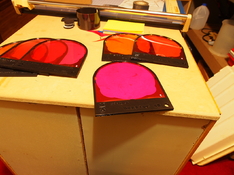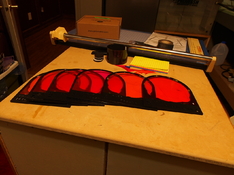Try polarizing the lights, whether they are electronic flash or tungsten. I worked 21+ years at the National Gallery of Canada, first as a photo lab technician, and later as a photographer, and polarizing the lights was de rigueur for all copy setups, whether we were coping photographs, drawings, paintings or small 3D objects. And be sure to aim your lighting accurately, and use a decent meter to check for even illumination across your copyboard.
If you are copying an old photograph, where the image is partially or completly "silvering out," polarize the lights and the camera lens, and rotate the on-lens pola filter until the silvering out disappears. You will find that this method is also very good for copying anything else, especially works on paper. It will greatly increase contrast and saturation, and reduce flare.
When we used to employ the double-polarization before we went digital (or does one say "embraced digital?"), calculating exposure was a bit of a bear. One of my former colleagues used to say that, "...it really soaks up the light."




